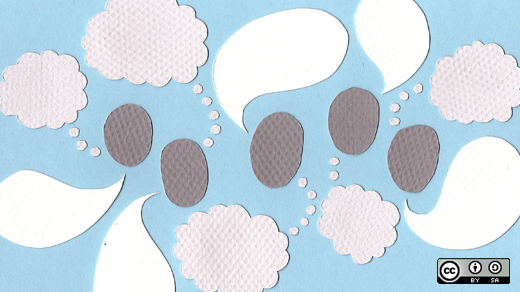Recently I came across an article by Roy Luebke at Blogging Innovation that asked the rather interesting question, “Is Management by Consensus Killing Innovation?” While I've (thankfully!) never had a manager whose decision-making was contingent upon the agreement of a team, I have spoken with many people who confuse the concept of collaboration with consensus.
Collaboration does not require consensus. Collaboration means working together toward solutions, pooling talents and ideas, and recognizing both successes as a team and the specific contributions of members. Consensus is a team's unanimous agreement on a decision. I am prepared to argue that when consensus is consistently and quickly reached, collaboration may not be happening at all.
So let's talk about the key elements that support an authentic collaborative environment.
Trust. When a group of individuals agrees on decisions very quickly, I tend to suspect that some members do not feel safe in expressing disagreement or alternative ideas. Group members must be able to trust that disagreeing with more powerful members will not bring retribution.
Now “retribution” is a heavy word, but don't misunderstand. Rare are the immediate, severe consequences for dissent. It's the glance of reproach or disapproval from someone in power, or the touchy defensiveness when a leader's idea is questioned, that silences other members.
In addition, people will only propose wild and risky ideas when they trust other group members—particularly those with authority—to evaluate the idea rather than the person behind it.
If group members are not disagreeing and they're not proposing questionable ideas, what you're experiencing is probably more conformity than consensus.
Maturity. Have you ever tried to collaborate with someone who couldn't grok the difference between rejecting an idea and a person? It's darned near impossible. When one or more group members need to be handled with kid-gloves, most others will disengage, often agreeing to an idea just to escape the situation. Especially if the coddled member also happens to be a person of authority.
Yet disagreement—even strong disagreement—does not preclude moving forward with a decision. The process of laying out potential problems and advocating for other solutions is a valuable one. Maturity and confidence allow group members to express doubts about an idea while deferring to the majority who wishes to act on it.
Of course we rarely choose all of our team members, and tempting though it may be, we can't usually take our toys and go home. Anonymous voting—or perhaps the now-popular practice of simultaneous voting-with-dots—can ease more fragile egos while weeding out improbable proposals. Likewise, consider making a parting request that group members think on the ideas presented and send concerns or suggestions to one diplomatic person.
Clarity. Contrary to popular belief, collaboration doesn't require a democratic process from beginning to end. People generally just want you to be upfront about who will be involved with and responsible for decisions at each step.
And, managers? At times it's a relief to everyone if these collaboration sessions are used to generate ideas that management will choose from. There's something to be said for a manager who will listen thoughtfully to her team, encourage them to present ideas and work together on solutions, then lead the group in one direction while offering her rationale for the decision.
Decisions by consensus
Perhaps the most valuable part of consensus-building is the way the final solution represents many different perspectives. Compromises are made to achieve individual agreement, then checked and balanced by those who have already bought in. Yet this can also be a great weakness when competing interests dilute solutions or stall a decision.
Collaboration offers a middle ground. Individuals can influence the outcome, both by presenting and pushing back against ideas. Rather than bartering “yes” votes for changes favorable to an individual, it gives group members the opportunity to be open about why they don't support the idea as proposed and what adjustments could be made to it. At the same time, others can point to provisions that seem dubious and self-serving—what American politicians would call “pork”—and seek their justification or understanding.
None of this can happen without the aforementioned elements being firmly rooted in the team, however. It takes trust to admit that you're opposed to part of an idea because it would draw resources away from another project you believe is crucial. It takes maturity to acknowledge that the best solution for a given problem may not be the one best for your career. It takes clarity to successfully bring the ideation phase to a close and move on to implementation.
In short, here's why collaboration and consensus don't go hand-in-hand: When you bring together intelligent, insightful people, they often disagree. Sometimes they can persuade each other to accept a different position, sometimes not. But if the pool of talent is deep, why wait around for consensus when you could be collaborating on your next project?






2 Comments